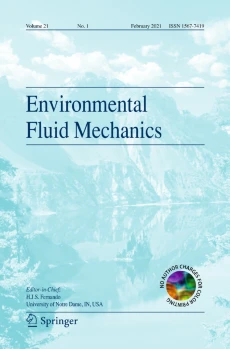Motions comprising of jets, plumes, and thermals are commonly encountered in geophysical and
environmental flows. Some examples include release of hot gases during volcanic eruptions, ocean
overflows, effluent discharge and transport, convection, cloud formation, melting and solidification.
These fluid motions are greatly modified in the presence of stratification, rotation, or different phases
in the environment [List 1982, Deremble 2016, Boufadel et al., 2020]. In the presence of gravity, the
density differences have a dramatic impact on the dynamics and mixing of heterogeneous fluids. For
example, thermal stratification in reservoirs can reduce the vertical mixing of oxygen to the point that
water at the bottom becomes anoxic through the action of biological processes. The 2010 Gulf oil spill
disaster is yet another instance where ocean stratification modified the dynamics of the oil-gas jet.
Meltwater and sediment-laden jets/plumes at tidewater glaciers, resulting from the localized subglacial
discharge of surface melt, influence submarine melting of the glacier and the delivery of nutrients to
the fjord’s surface waters. Thermals play a key role in cloud micro-physics and determine the type and
composition of clouds. Rotation is known to strongly modify the dynamics of jets and plumes. Given
the rich physics and wide application, study of jets, plumes, and thermals is an important underlying
problem in geophysical and environmental flows.
The study of jets, plumes, thermals, and currents dates back to the 1950’s with the pioneering work of
Morton, Taylor, and Turner (MTT) in 1956. Since then, a lot of work has been done to understand the
dynamics of these flow systems, development of empirical parameterizations and new theory and
models. Although notable progress has occurred in recent years, there are still important questions
unanswered, which limit our capability to accurately model these flows. Over the years, different
aspects of jets, plumes and thermals have been studied in some detail, namely, pure jets and plumes,
buoyant jets, lazy plumes, melt plumes, thermals, particle-laden/particle-bearing jets and plumes,
thermals with phase change, and much more. All of these research studies have helped advance our
understanding of this topic. Five decades down, the topic seems as relevant as before and clearly some
of the questions remain, which could be answered through detailed investigations of the small scales
via Direct Numerical Simulations (DNS) or Large-Eddy Simulations (LES), detailed experiments with
sophisticated technology, and the development of novel constitutive relations. These results could later
be extended to real-life situations such as ocean mixing, cloud modeling, ice melting, avalanches etc.
The aim of this Special Issue is to present a group of papers that could summarize the state-of-the-art
of the knowledge of jets, plumes, and thermals in environmental and geophysical applications, at the
time of reporting novel pathways in research. It will contain experimental, theoretical and numerical
contributions on the topic.











